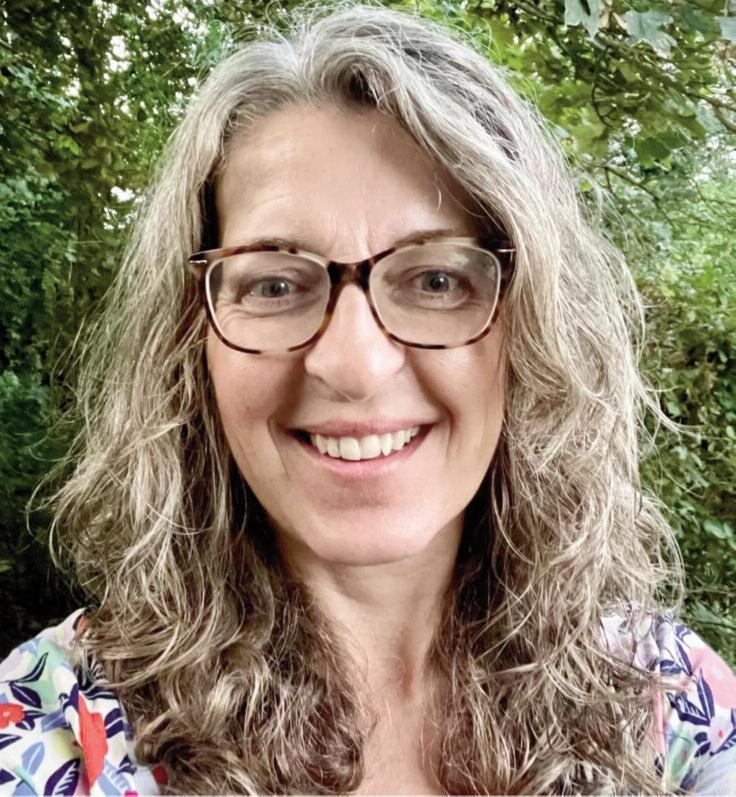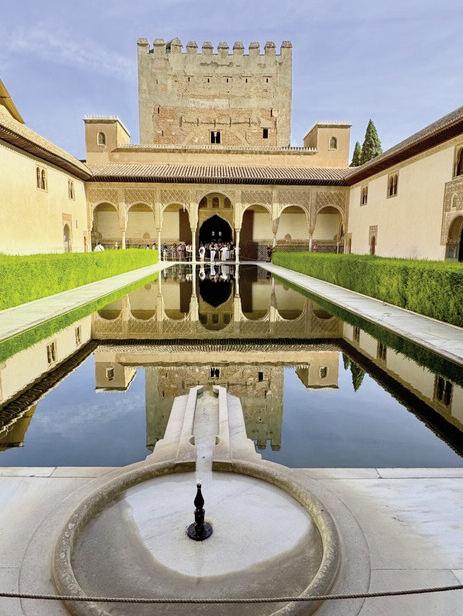Seville - An accessible city break in the city of oranges and flamenco
We arrived in Seville at 9am, fresh off the train from Granada, into a city I have long wanted to visit. Slightly underwhelmed by the initial walk from the train station, I was a little concer ned that Seville was going to live up to expectations, but this was quickly put to rest
Our apartment building, through a large wooden door, was reminiscent of a Moroccan riad A central fountain, walls ador ned with intricate tilework, along with plenty of greenery Delighted, we went adventuring to find, a couple of streets away, the glorious Seville Cathedral An impressive sight indeed, especially so early in the mor ning Stopping for some breakfast to soak up all the grandeur, we enjoyed a delicious meal of fresh orange juice and even fresher churros with chocolate sauce All accompanied with


views of horse drawn carriages, taking visitors through Seville’s picturesque streets.
Thus fortified, we went wandering and discovered one of the loveliest cities I have ever visited. Wide streets framed by orange trees gave way to narrower lanes with houses painted in various shades of terracotta and ochre From there we made our way down to the river.
Hours of wandering, stopping from time to time for something to eat, accompanied by a cold beer or a glass of tinto And around every cor ner, every time something even prettier to see
The following mor ning saw us up with the sunrise to take full advantage of the light hitting the Cathedral The city was slowly waking up, shopkeepers setting



up for the day, cafés putting out tables A few people on their way to work. The sunrise was glorious as the bright light framed the Giralda Tower Originally the minaret of a mosque, later the bell tower when the cathedral became a Christian church, now the largest Gothic cathedral in the world It was quite a sight as the early mor ning light reflected off the limestone building, clothing the whole in a rosy golden glow
Continuing our exploration, we arrived at the gardens surrounding the Royal Alcazar of Seville, the historic palace still used by the Spanish Royal Family Purchasing a ticket for later, we ventured across the road to the site of Seville’s former tobacco factory. Once the largest industrial building in all of Europe, the eponymous heroine in Bizet’s Carmen was said to have been a worker here
Next, through leafy parks and past the striking Lope de Vega Theatre, we reached the Plaza de Espana. Built for the 1929 Ibero-American Exhibition, it is one of Seville’s most iconic sights Framed by a huge semi-circular building, with a tower at each end. A large fountain in front, framed by four bridges, this has been the setting for many films including ‘Lawrence of Arabia’ The plaza is stunning and a wonderful spot to sit in the sunshine and enjoy an icy cold lemon granita
We enjoyed lunch over the river in Triana before our final stop of the day At the Royal Alcazar we were treated to beautiful architecture, cool corridors decorated with exquisite tilework and patios
showcasing intricate carvings on every surface This was all reflected back to us in the water of the Patio de Las Doncellas with its rill stretching from one end to the other. We searched for the dolls’ heads in the Courtyard of the Dolls We took a moment to soak up beautiful gardens with their abundance of pools
Finally, tired but sated with beauty, we headed back to our apartment which definitely lived up to the promise of its entry A boutique property with only six apartments, our host had thought of everything It was a cool and relaxing sanctuary, fully wheelchair accessible with quite possibly one of the biggest roll in showers I have ever seen. There was even lift access all the way to the roof terrace, which, had we had more time, would have made a perfect spot to relax and soak up the Andalucian sunshine
But we had an appointment next door with a flamenco dancer For just ten feet away was a tiny theatre, housing only thirty people, in which we were about to enjoy one of Seville’s most famous experiences. It was incredible. Just centimetres from the stage, the flamenco artist whirled like a dervish, stamping her feet and gesturing with her arms We were so close we could feel the rush of air as her shawl was tossed like a bull fighters cape, a completely mesmerising performance underscored by the hypnotic voice of the singer and the accompanying guitar
And later, after tapas in a softly lit square, we said goodbye to Seville.

A c c e s s i bi l i t y
We were genuinely impressed by access throughout the Andalucian capital Wide, smooth pavements were a feature of much of the city with drop kerbs as necessary While cobbles did feature in the smaller streets, this did not cause us any problems with our combination of power and manual wheelchairs.
The city is largely flat and relatively compact, making it easy to reach most places under your own steam
P l a z a de E s pa n a
The park itself was fully accessible and visitors could access a small part of the actual Plaza via a ramp on the left-hand side. However, full access to the Plaza was tricky due to some small singular steps at varying points. While many manual chair users would have been able to navigate them, it did provide an obstacle for us. And this was something we experienced quite frequently in Spain, both baffling and frustrating in equal measure. A simple ramp would have eliminated any barriers and provided access for everyone. It seemed curious that it had been overlooked when, in the main, a lot of care had been taken to ensure attractions and sights were accessible
But the grandeur was undeniable and there was more than enough to enjoy, making it a definite sight to see
R o y a l A l c a z a r o f Se v i l l e
Again, access was generally good with small ramps provided to allow entry to the different areas Similarly, this could have been improved easily in some places with the addition of more, but overall, it was a good experience and easy to navigate.
L a s Se t a s
The one huge disappointment was the Metropol Parasol, known as Las Setas. An iconic building in the centre of the city, it is a massive, honeycombed structure with lifts to walkways which provide a fantastic view over the city. Despite being touted as largely accessible, this is absolutely not the case A tiny percentage is actually accessible to wheelchair users, merely a single loop around the main building where the view is almost completely obscured by the structure itself While wheelchair users can enter for free, the same is not the case for carers who pay the full fee. Staff displayed a clear lack of care or understanding Not very inclusive
But that one negative aside, our time in Seville was characterised by a sense of increasing beauty as, while every street was gorgeous, it seemed that around each cor ner things only got better It was too short a stay, but it was blissful and left us planning a retur n

Ceiling in Court of Ambassadors
Cheryl Everitt is the founder of A Wheel and Away, an accessible travel consultancy designed to help people with disabilities plan exciting and independent adventures She is also mum to two young people who are wheelchair users and, as a family, they share a love of exploring new destinations. For more information about A Wheel and Away go to www.awheelandaway.com
